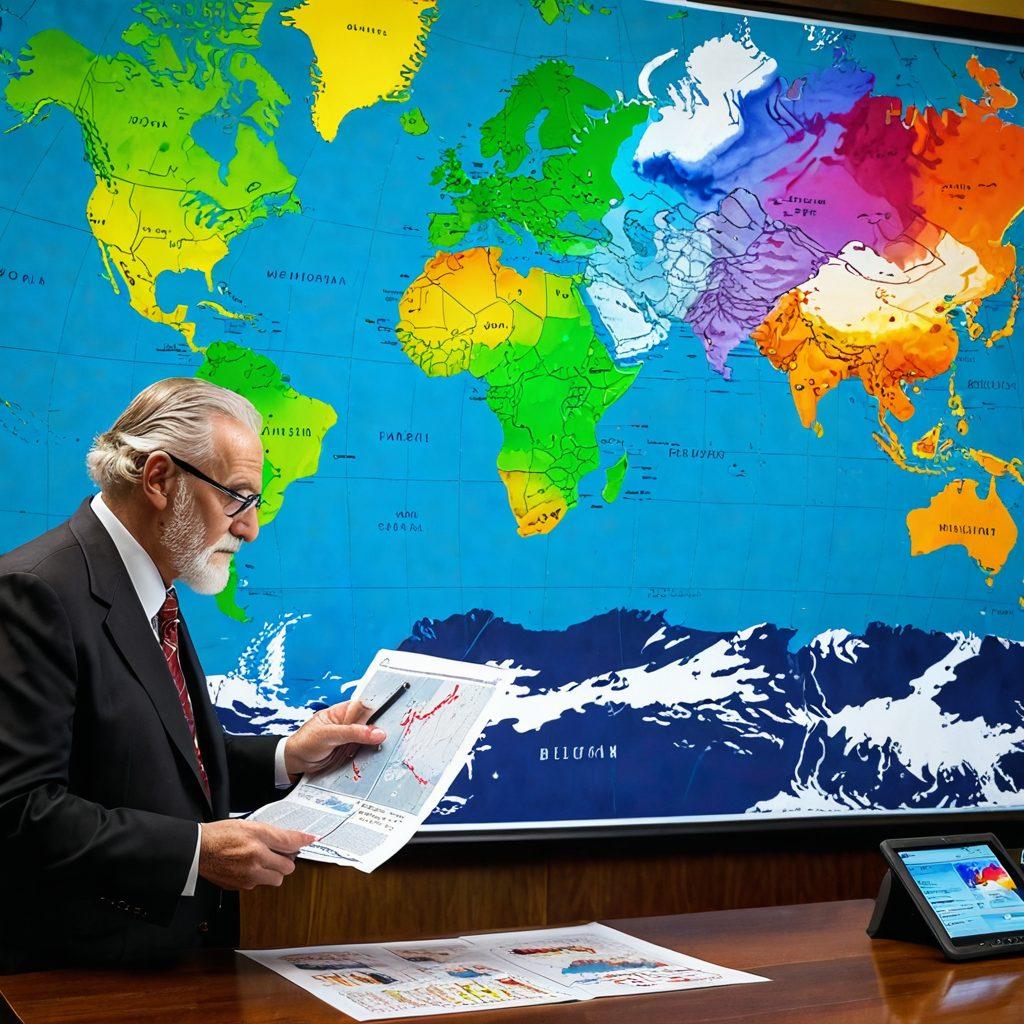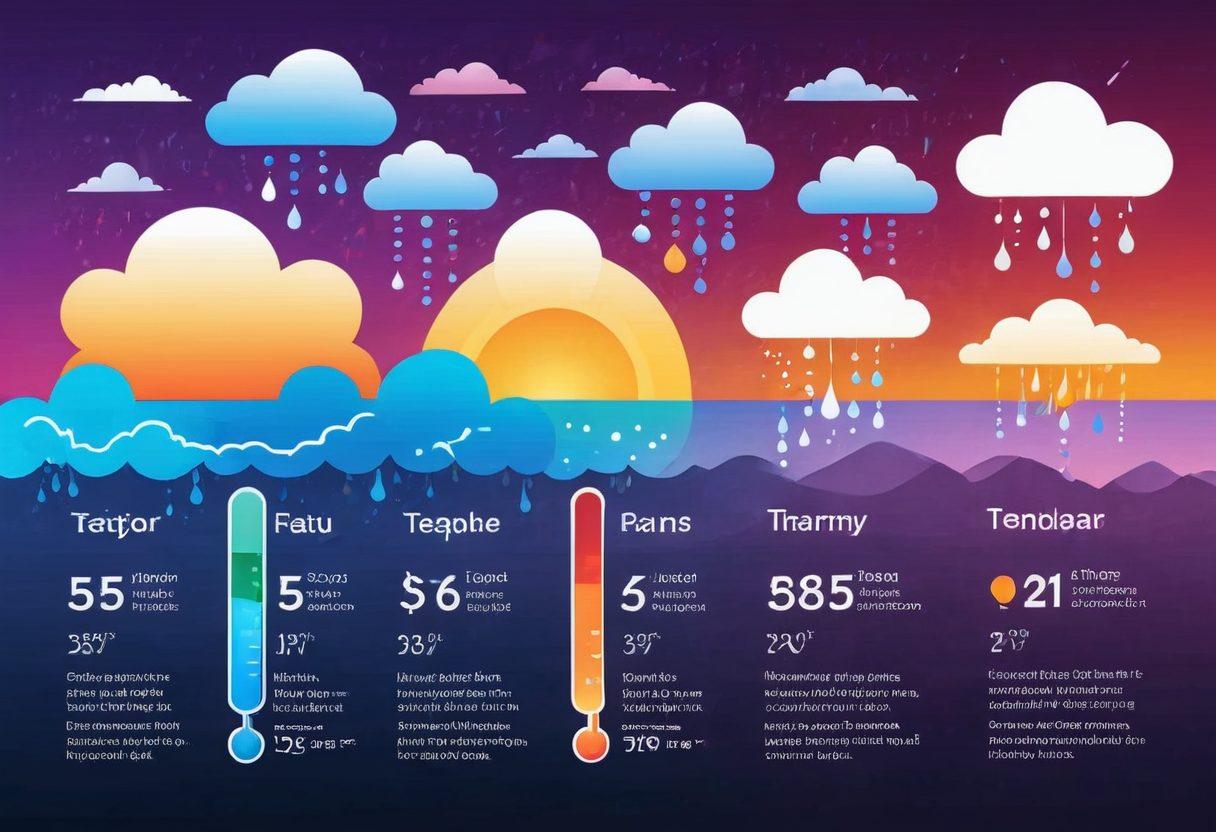Unraveling Weather Mysteries: A Deep Dive into Climate Patterns and Forecasting
Imagine waking up to a day filled with sunshine and birds chirping, only to be caught in an unexpected downpour by lunchtime. How often have we found ourselves at the mercy of nature's moods? Understanding weather forecasting is akin to reading a novel where the plot twists are the atmospheric conditions that shift by the minute. In this deep dive into climate science, we will decode the significance of meteorological data and how it shapes our understanding of climate patterns. With recent shifts in weather patterns because of climate change, this topic has become more crucial than ever, making the need for accurate weather reports and insightful weather analytics all the more paramount.
It’s astonishing how advancements in technology have transformed the way we predict the weather. In the past, farmers relied on the sky’s cues to navigate crop planting seasons. Today, we have sophisticated tools that examine stationary weather data, including temperature analysis, precipitation levels, and humidity tracking. The integration of this meteorological data allows meteorologists to make informed weather forecasts, effectively bridging the gap between science and what we encounter in our daily lives. So, how do these experts put the pieces together?
Let’s take a whimsical journey through a day in the life of a meteorologist. Picture them at the crack of dawn, poring over satellite images and atmospheric condition charts. They sift through real-time weather data, analyzing shifts in pressure systems, which can be likened to detective work. With each discovery, they build a narrative that can predict local climate variations from sunny afternoons to severe weather alerts. Can you imagine the excitement when they spot a developing storm and relay crucial weather updates that can save lives? It’s evident that their role goes beyond forecasting; they are our modern-day oracles of the skies.
Now, let’s get back to our everyday lives. What does this mean for you? The next time you check your weather report before heading out, think about the myriad processes that went into creating that forecast. It’s not just about the temperature or whether it will rain; it represents a culmination of environmental monitoring and weather observation that impacts everything from your weekend plans to how communities prepare for extreme weather. Engaging with weather insights can empower you to make more informed choices, embracing the unpredictable nature of climate patterns with confidence rather than apprehension.
In a world increasingly influenced by climate change, leveraging meteorological forecasts and weather analytics becomes essential. The data collected does not merely sit on a shelf; it drives policies, advances research, and shapes our understanding of how to adapt to our changing environment. By fostering a connection with climate science, we can cultivate a sense of responsibility towards our planet. So, the next time a storm rolls through your town or a sunny day lures you outside, remember the science and the smart minds behind the weather forecasting that makes our lives just a little easier to navigate. What role will you take in becoming more weather-wise?
From Temperature Analysis to Precipitation Levels: Navigating the Complex World of Weather Forecasting
Have you ever wondered how weather forecasts can sometimes feel like a gamble? One moment, the sun is shining brightly, and within hours, dark clouds gather, hinting at raindrops ready to make a splash. Welcome to the intricate world of weather forecasting, where atmospheric conditions are studied, analyzed, and predicted utilizing an array of tools necessary for quantifying climate patterns. In a rapidly changing climate, understanding these predictions isn’t just a matter of curiosity; it's a vital part of our daily decision-making.
Picture this: It's the day of your much-anticipated outdoor gathering. You check the latest weather report, only to realize that the predicted sunshine has given way to ominous clouds and potential rain. Temperature analysis isn't just numbers; it reflects the very fabric of daily life—what we wear, where we go, and sometimes, whether we celebrate an occasion or reschedule. This interplay between human activity and weather is a testament to the significance of accurate weather forecasting in our lives.
So, how do meteorologists piece together this complex puzzle? It all begins with thorough inspections of meteorological data. From humidity tracking to monitoring precipitation levels and temperature variations, it's like an intricate dance. Meteorological forecasts depend on the relentless collection of stationary weather data from a web of local climate monitoring stations. These pieces allow us to gain valuable weather insights that inform us about what to expect in the coming hours and days.
And it doesn't stop there—climate science delves deeper, linking changing patterns to climate change phenomena. Severe weather alerts, for instance, are pivotal in our response to potential dangers. When a severe thunderstorm or hurricane is on the horizon, understanding these atmospheric conditions can mean the difference between safety and disaster. As we weave through environmental monitoring, we realize that proper predictions can save lives, as they alert communities to prepare and thrive amidst unpredictable conditions.
Intriguingly, the realm of weather analytics has grown with technological advancements. Equipped with real-time weather data, newfound prediction models leverage historical patterns to shape future forecasts. Are we set for more rain due to certain humidity levels, or will a welcoming breeze sweep through? Questions like these ignite curiosity and engage a sense of awe about how interconnected we are with the atmosphere. Ultimately, the quest for perfect weather forecasting is not just about patterns and predictions; it’s about the narratives we create around them. So, the next time you glance at those weather updates, remember the scientific tapestry woven behind it, and appreciate the nuances that come with navigating our ever-changing climate.
Environmental Monitoring and Severe Weather Alerts: Staying Ahead of Climate Change Challenges
As climate change continues to make headlines, understanding environmental monitoring has never been more critical. Imagine waking up to a seemingly perfect day, only to find out later that severe weather warnings are flashing across your screen. This is where the power of accurate weather forecasting comes into play. With the understanding of climate patterns and the innovative use of meteorological data, we can better prepare for the surprises that nature throws our way.
Picture this: You’re planning a weekend getaway, excited to soak in some sunshine, when suddenly your local weather report predicts thunderstorms. Frustrating, isn’t it? That’s the beauty of weather observation and the importance of reliable environmental monitoring. Thanks to the advancements in climate science and weather analytics, meteorologists are now equipped to provide real-time weather updates that keep you in the loop. By analyzing atmospheric conditions, including temperature analysis, precipitation levels, and humidity tracking, forecasters can paint a clearer picture of what’s to come.
Ever wondered how a simple weather app can alert you to raising temperatures or fluctuating humidity? It’s all about the data! Meteorological forecasts draw upon stationary weather data gathered from thousands of weather stations worldwide. These insights are crucial for understanding local climate and how our world is changing. As we experience increasingly erratic weather patterns due to climate change, the need for science-backed weather updates is paramount. We can now receive severe weather alerts that warn us ahead of time, ultimately enhancing our safety and preparedness.
In this fast-paced world, the question remains: How do we stay one step ahead of climate change challenges? The answer lies in embracing technology and the power of meteorological data. By utilizing weather forecasting techniques and staying abreast of local climate changes, individuals, communities, and businesses can adapt effectively. Whether it's planning events, preparing for disasters or even aligning agricultural practices with weather predictions, action rooted in data-driven insights is essential. After all, who doesn’t want to be ahead of the curve?
So the next time you glance at a weather report or receive a severe weather alert, remember the science and the stories behind those forecasts. This is not just about numbers and algorithms; it's about real lives being impacted by the choices made based on these weather insights. Engage with your community, share knowledge about local climate changes, and stay informed! After all, understanding our environment is the first step in adapting to an ever-evolving climate. Let’s turn up the temperature on awareness and get proactive about protecting our planet.


